-
Notifications
You must be signed in to change notification settings - Fork 259
[V4.0] User Manual: Basic Editing
This section will cover frequent tasks that content editors do. For the purposes of this section, all examples assume a locally running copy of BrowserCMS, accessed as http://localhost:3000. A site hosted elsewhere might be running at http://yourcms.yourcompany.com.
To access that administrative portions of BrowserCMS you have to go to the admin login page. To do this, add /cms to your website’s URL. Working locally, this would be http://localhost:3000/cms. For site hosted elsewhere, it'll look like http://yourcms.yourcompany.com/cms.
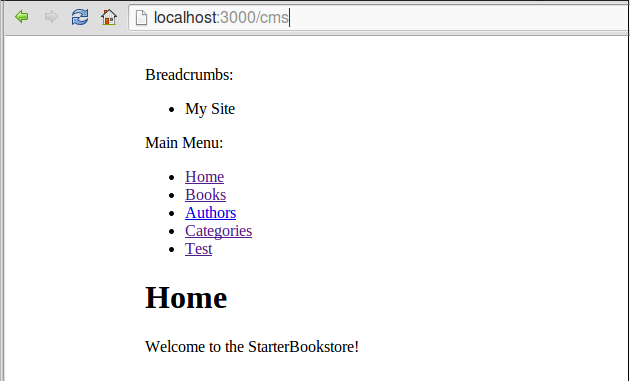
From the /cms URL, you can login like so:
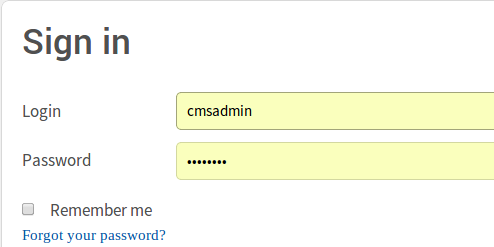
For a local site, this will be username = cmsadmin and password = cmsadmin. For a live site, this will have been randomly set during install.
After you log in, you will be sent to an edit screen for the site's home page.
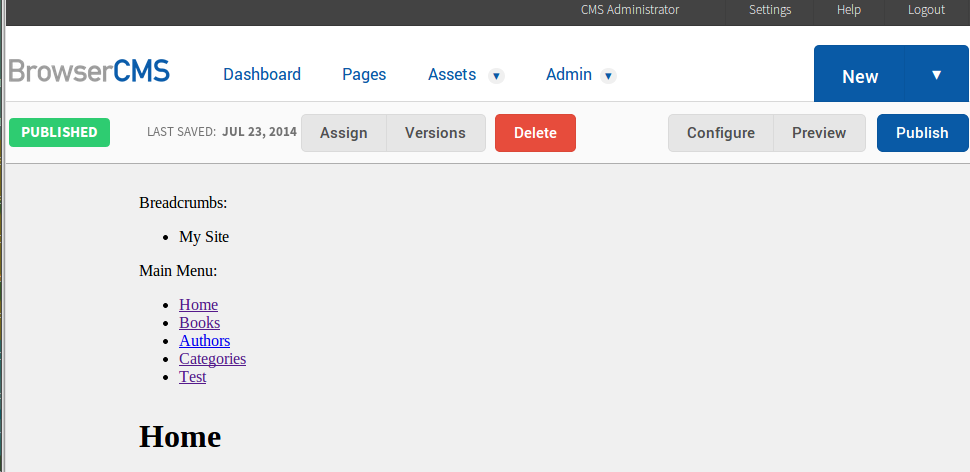
When you visit a page in BrowserCMS, and are logged in as editor, you will see the page exactly as a visitor would, but with a menu bar at the top of the page and various tool icons scattered in the content blocks. You use the menu bar and tool icons to make changes to the page.
BrowserCMS makes editing pages simple with ‘In Context Editing’. You browse the site just like a visitor would by clicking hyperlinks, menu items and buttons on the page. When you get to the page you want to edit, you just start editing it.
After you've made changes, click the Preview button at the top right of the page to see the page with your changes in it, just as users would see it.
Each asset (portlet, text, picture, or whatever) has editing tools above it. In the example below, there are four tools above the List All Books! portlet:

- The Up icon moves an asset up (and moves the container above it down - effectively switching places)
- The Down icon moves an asset down
- The X icon removes the asset from this page. The asset is still available to place on other pages.
- The Pencil icon edits the asset
Text assets are the most common assets. You can edit one simply by clicking anywhere in the text:

The content itself has a toolbar with standard tools like bold, underline, bulleted text, etc. If you're used to editing content with WordPress or Microsoft Word, you will feel at home here. You can copy or paste text into the text asset, add links, and other things. Here's a list of all the things you can do:
| Button | Meaning |
|---|---|
| Cut | Cut text to clipboard |
When you're done editing, simply click anywhere outside the text asset. The editing toolbar will disappear, and the page will revert to Draft status as shown at the top:
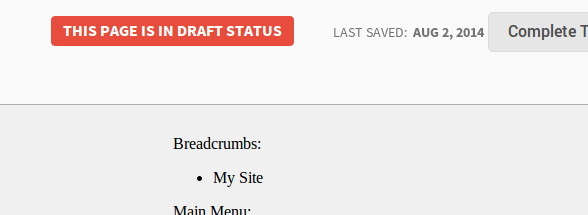
If you are also a content publisher for this section, you will see a Publish button. Click the Publish button and your changes will be "live" and visible to all users. (Or you can come back and publish it later. The changed page will remain in Draft mode, and the old page will continue to be displayed to users).
Alternatively you can click on the pencil icon over a text asset. This gives you a complete editing screen for the text asset:
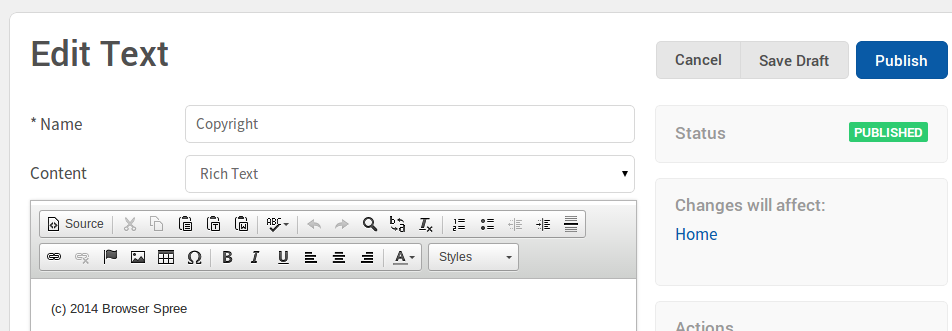
The editing toolbar is the same one used in Direct Editing. You can also switch the Content Type to Simple Text to add plain, ordinary, unadorned text or HTML code ... if you like that sort of thing.
When you're ready to make the change permanent, click "Publish". Like Direct Editing, this will put the page in Draft mode, ready to be published.
The + tool appears at the very bottom of the page:

Click on it to add a Text asset, or any other kind of asset.
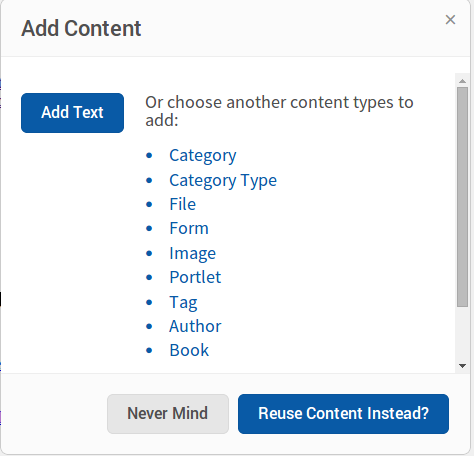
We want to add a new Text asset, so click Add Text. The editing screen is the same one you use for editing text assets.
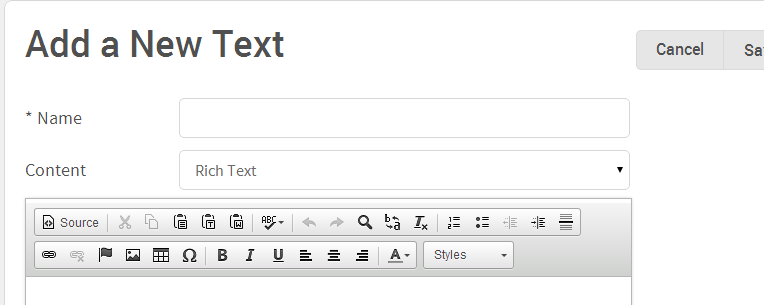
You are required to type a name here. By naming a text asset, you can use this text asset on more than one page, which we'll discuss under "Using an Asset on Many Pages" below. Once you're done adding the text, you save and publish the page like you normally would.
To add a new page to a site, click on the New menu and choose Page.
SCREENSHOT
There are plenty of options here, but the main thing you need to fill in is Name:
SCREENSHOT
Like editing a page, you click Publish to make the new page live. When you do this, you'll be on the editing screen for the new page, and can add content with the + tool.
Add Page creates a top-level page, i.e. it doesn't belong to any particular section. To place it in a particular section, see [V4.0] User Manual: Pages